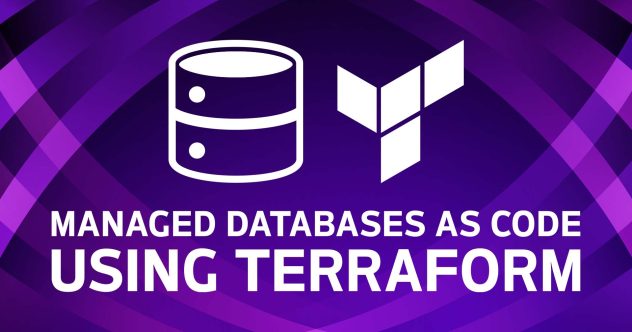In-memory data management caching tools store frequently accessed data in memory, which significantly improves performance by reducing how often the database needs to be accessed. There are so many different in-memory data management caching tools available that it’s worth taking a look at the strengths and weaknesses of each. In this guide, we’ll compare and contrast the most popular options, so you can choose the right tool.
Reviewing the Tools
In this first section, we’ll walk through the following tools, providing a description, followed by benefits and challenges:
- Redis
- Memcached
- Apache Ignite
- Hazelcast
- Aerospike
Let’s dive in.
Redis
Redis, short for Remote Dictionary Server, is a popular in-memory data management caching tool that is known for its speed, versatility, and scalability. It supports a wide variety of data structures, including the following:
- Strings
- Lists
- Sets
- Hashes
- Bitmaps
Redis is also highly scalable and can be easily distributed across multiple servers.
Typically, we use Redis to cache data that meets the following criteria:
- Frequently accessed
- Expensive to compute or retrieve
- Read more than updated
- Not highly sensitive
Data related to user sessions, API rate limiting counters, or even the results of complex calculations are often what one might choose to cache with Redis.
Beyond caching, Redis offers Pub/Sub messaging paradigms, streams for logging and data aggregation, and Lua scripting capabilities. Its lightweight nature and broad support across programming languages make it an industry favorite.
Caching Benefits
- Versatile data structures: Redis supports strings, sets, lists, hashes, bitmaps, and more, allowing varied and complex caching strategies.
- Data persistence: Redis allows you to rebuild the cache after a restart without overloading your primary databases.
- Atomic Operations: Atomicity ensures data integrity, making Redis ideal for tasks like real-time analytics.
Limitations
- Single-threaded model: While a simple-threaded model simplifies the architecture, it might not offer the best performance for all caching tasks. However, you can leverage Redis Clusters to allow automatic data sharding across multiple nodes, enabling horizontal scaling and high availability.
- Memory usage: Due to its rich data structures, Redis sometimes consumes more memory than other caching solutions.
If you’re interested in learning more about Redis, check out this video on why Redis is so fast. If you’d like to try it out yourself, you can deploy either a single-node Redis instance or an entire Redis Sentinel cluster with a single click from Linode’s App Marketplace.
Memcached
Memcached is a general-purpose, distributed memory caching system often used to speed up dynamic, database-driven websites by caching data and objects in RAM. It is known for its simplicity and performance. Memcached is a good choice for simple caching needs, and it is very efficient at storing and retrieving large amounts of data. If you simply need to cache strings or relatively flat data structures, the simplicity and multithreaded architecture of Memcached can provide great performance.
While its primary use case remains caching, Memcached’s utility has expanded to session storage and page caching in dynamic web applications. Its architecture is inherently scalable, supporting easy addition or removal of nodes in the system.
Caching Benefits
- Simplicity: Memcached’s straightforward design makes it easy to integrate and use.
- Multithreaded: This allows Memcached to handle multiple tasks effectively, offering better performance for simple caching needs.
- Least recently used (LRU) eviction: Memcached uses an LRU mechanism for eviction, optimizing memory usage.
Limitations
- Limited data types: Memcached primarily supports string values, which might not be ideal for complex caching strategies.
- No persistence: Cached data can be lost if the system restarts.
Apache Ignite
Apache Ignite is a distributed in-memory data management caching tool that offers a wide range of features, including data partitioning, replication, and SQL support. It’s a good choice for applications that require high performance and scalability, and it can also be used for distributed computing tasks. If your cache requires compute capabilities, such as running analytics on the cached data, Ignite’s distributed computing features can be a good fit.
Another thing to consider is whether or not your data model is relational, or if you want to query your cache using SQL. Apache Ignite supports this out of the box.
Designed to process large volumes of data with low latency, Apache Ignite is often employed in scenarios such as:
- Web-scale applications
- Real-time analytics
- Hybrid transactional/analytical processing
Caching Benefits
- SQL queries: Ignite allows you to run SQL queries on your cached data.
- Distributed computing: Ignite offers features for distributed computing, making it suitable for analytical tasks on cached data.
- Versatility: Besides caching, Ignite can also serve as a full-fledged in-memory database.
Limitations
- Complexity: Ignite’s wide range of features can be overwhelming and might lead to a steeper learning curve.
- Memory overhead: The system’s metadata might consume a substantial portion of the memory.
Hazelcast
Hazelcast is an in-memory data grid that can serve as a distributed cache. It’s known for its high performance and reliability, offering a wide range of features, including data partitioning, replication, and failover. Hazelcast provides advanced data distribution and failover strategies for high availability and reliability, which can be important for certain caching scenarios.
If you’re running a Java-based application, Hazelcast’s Java-centric design provides excellent performance and integration. The tool has grown in popularity among Java-based enterprises for its distributed computing capabilities. It’s often used for web session clustering, distributed caching, and real-time streaming.
Caching Benefits
- Java integration: Hazelcast is Java-based, offering excellent performance and integration for Java applications.
- Data distribution: Advanced mechanisms for data distribution and failover make it highly available and reliable.
- Scalability: It can easily scale out to handle large datasets.
Limitations
- Language limitation: Since it is Java-centric, Hazelcast might not be the first choice for non-Java applications.
- Operational complexity: Ensuring consistent configurations across nodes can be challenging.
Aerospike
Aerospike is a NoSQL database that can also be used as an in-memory data management caching tool. It is known for its high performance and scalability, and it supports a wide range of data types. Aerospike is a good choice for applications that require high performance and scalability, and it can also be used for real-time analytics.
Apart from caching, Aerospike’s strong suits include personalization for digital platforms, real-time fraud detection, and recommendation engines. Its predictable performance at scale makes it a favorite among industries with massive data transaction needs.
Caching Benefits
- Hybrid memory: Aerospike can operate with both RAM and SSDs, allowing for effective memory management.
- Cross data center replication: This ensures high availability across distributed systems.
- Speed: Aerospike is designed for high-performance needs, making it ideal for real-time big data applications.
Limitations
- Configuration overhead: Tweaking Aerospike for specific use cases might require in-depth tuning.
- Cost: The enterprise version of Aerospike, which provides additional features, comes with licensing costs.
Comparing Specific Features
When we look at specific capabilities, how do these various tools actually compare? Let’s find out.
Simplicity and Versatility
While all these tools serve as caching solutions, Redis often shines in terms of its ease of setup and support for a wide variety of data structures, making it versatile for varied caching scenarios.
Language and Integration
Redis’s language-agnostic nature gives it an edge when integrating with applications written in different languages. However, for Java applications, Hazelcast offers tight integration and performance.
Data Management Capabilities
When it comes to managing relational data or querying caches using SQL, Apache Ignite has a distinct advantage. Meanwhile, Redis offers more granular control over data expiration policies. When memory is at a premium, Aerospike’s hybrid memory architecture becomes critical.
Computing and Performance
Ignite’s strength lies in its distributed computing features, ideal for those who require analytics on cached data. Alternatively, Memcached’s multithreaded architecture can potentially outperform Redis for simpler caching tasks.
High Availability and Reliability
In scenarios that demand high availability and failover mechanisms, Hazelcast’s data distribution strategies could be a game-changer. Likewise, Aerospike’s cross data center replication can be a crucial feature for caching in distributed systems.
Summing It Up
The best in-memory data management caching tool for your needs will depend on your specific requirements.
- If you need a tool that is fast, versatile, and scalable, then Redis or Apache Ignite are good options.
- If you need a tool that is simple and efficient for simple caching needs, then Memcached is a good choice.
- If you need a tool that offers high performance and scalability for Java applications, then Hazelcast is a good choice.
- If you need a tool that offers high performance and scalability for real-time analytics, then Aerospike is a good choice.
I hope this little cheat sheet helps you understand how these in-memory tools work, what they’re best for, and their limitations. Linode’s docs have a wealth of resources and guides related to cache strategies and tools. Check them out today!












Comments